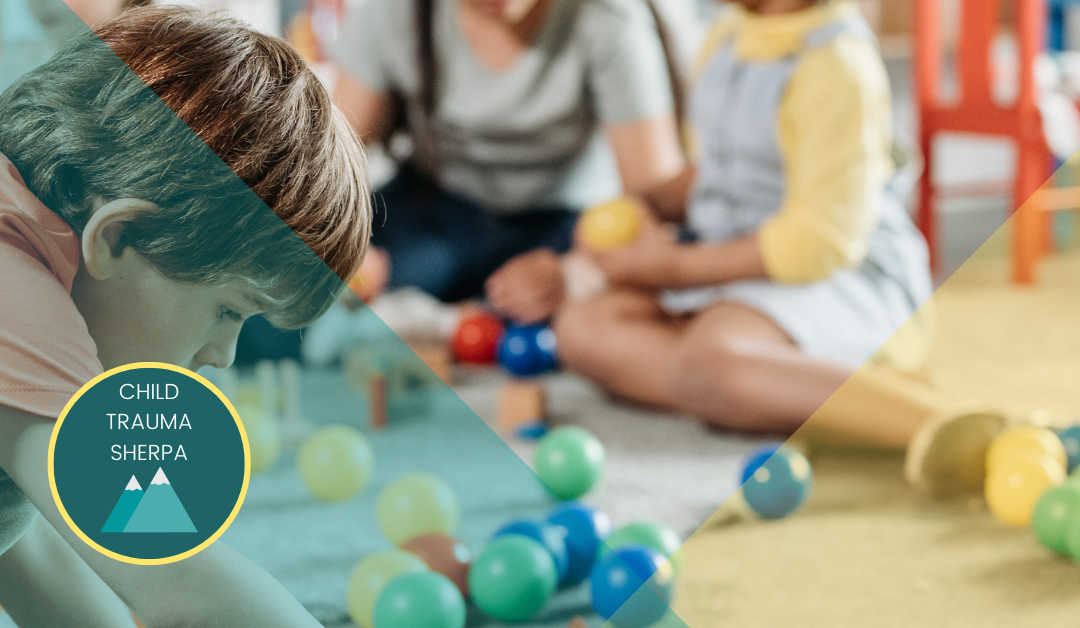The Types of Brain Breaks and Tips for Effectively Using Them to Assist in Regulation
Our brains cannot run at 100% all of the time. Brain breaks are a really helpful tool for anyone, but particularly for children with trauma. Like medicine, they are designed to help with specific needs and can be adjusted when necessary.
Brain breaks aren’t a bandage. They can actually help build stress tolerance, which helps children work through trauma in a more healthy manner. This is because a brain break is literally taking a moment to self-regulate, which helps us operate from higher regions of the brain, allowing us to think more clearly, make better decisions, and interact with others more effectively.
The Three Types of Brain Breaks
There are three types of brain breaks: energizing, calming, and focusing. Like medicine, it’s important to choose the right one for the needs of the child. For example, if a child is feeling lethargic, an energizing brain break would be beneficial. But for a child exhibiting hyperactive behaviors, a calming brain break is a better fit. Along those same lines, a child having trouble focusing and engaging would find a focusing brain break beneficial. When utilized in a classroom, all students, whether they have trauma or not, can benefit from the practice.
Brain Breaks to Try
Energizing: Individual or Group Setting: “Dance Like”
With or without music, have the child dance based on the descriptor you call out (eg. like a chicken, like you have a sore foot, like you’re in Jello). Every 30 seconds or so, call out another descriptor to keep the child on their toes and get them energized.
Calming: Individual or Group Setting: “Deep Dive”
This is classic deep breathing. You can change the amount of time for each breath, but the point is to slowly inhale and exhale. For example, inhale for 4 counts, hold for 2, then exhale for 5 counts.
Focusing: Individual or Group Setting: “I Spy”
The classic game of I Spy is great to get kids focused. Say, “I spy with my little eye something [fill in the blank with a descriptor, such as color, shape, height, etc.].” If in a group setting, have children take turns guessing.
Tips for Brain Breaks
Here are a few tips to help you incorporate brain breaks into a child’s life more effectively.
1 | Use preventative “dosing” by planning brain breaks throughout the day.
Consistency is key in regulating. For example, you can do brain breaks every certain number of minutes or hours, or plan to do them during periods of transition to help the child move from one activity to another. By being consistent, the brain will begin to learn when regulation is coming, making it less likely that the child’s brain will seek out maladaptive self-regulatory interventions. Consistency can also cultivate feelings of safety.
2 | Consider the age of the child.
Younger children will need brain breaks more often than older children. This doesn’t mean doing a five minute activity whenever you do a brain break. Rather, think about how you can build regular breaks into the day, giving children a moment to breathe and then dive back in.
3 | Brain Breaks need to be taught.
Introduce a few at a time and practice them. When a child is comfortable with a particular brain break activity, introduce a new one.
4 | Dose when dysregulation occurs.
This is like an emergency inhaler used during an asthma attack. When you see early signs that a child is slipping into lower regions of the brain leading to dysregulation, such as being distracted, hyperactive, or withdrawn, incorporate a brain break “on the fly.”
Key Takeaways
Brain breaks are like taking a moment to pause and reset our brains. They can help focus, energize, or calm us depending on the type of brain break used and can be effective in individual and group settings. When done regularly, children can begin to recognize on their own when they need a brain break, plus it helps them develop stress tolerance, so they don’t exhibit unwanted behaviors. They are truly a powerful mind tool!


